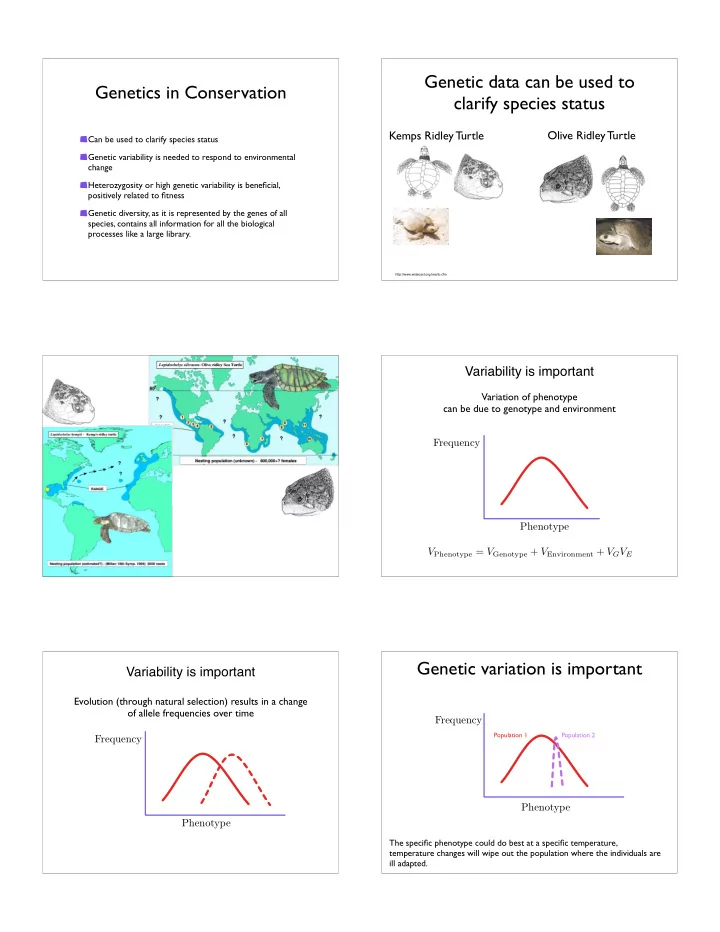

Genetic data can be used to Genetics in Conservation clarify species status Kemps Ridley Turtle Olive Ridley Turtle Can be used to clarify species status Genetic variability is needed to respond to environmental change Heterozygosity or high genetic variability is beneficial, positively related to fitness Genetic diversity, as it is represented by the genes of all species, contains all information for all the biological processes like a large library. http://www.widecast.org/sea/lo.cfm Variability is important Variation of phenotype can be due to genotype and environment Frequency Phenotype V Phenotype = V Genotype + V Environment + V G V E Genetic variation is important Variability is important Evolution (through natural selection) results in a change of allele frequencies over time Frequency Population 1 Population 2 Frequency Phenotype Phenotype The specific phenotype could do best at a specific temperature, temperature changes will wipe out the population where the individuals are ill adapted.
Individual Heterozygosity Population size fitness trait Number of individuals in a population tells us whether we need to be concerned about the future of the population. How to measure? Census population size : total number of individuals in a population Effective population size : total number of individuals that contribute to future generations Thelen, G. C., Allendorf, F. W.. 2001: HETEROZYGOSITY-FITNESS CORRELATIONS IN RAINBOW TROUT: EFFECTS OF ALLOZYME LOCI OR ASSOCIATIVE OVERDOMINANCE?. Evolution : Vol. 55, No. 6, pp. 1180–1187. Modeling populations Modeling populations N haploid individuals assign each individual an allele, for example A or a . each individual produces lots and lots of gametes new N individuals are picked randomly out of that gamete pool 1 2 3 4 5 6 7 8 9 Model population through time Random Genetic Drift 50 50 40 40 Chromosomes Chromosomes 30 30 20 20 10 10 0 0 0 50 100 150 200 0 50 100 150 200 Generations Generations
Random Genetic Drift Random Genetic Drift 50 40 Chromosomes Chromosomes 30 20 10 0 0 50 100 150 200 Generations Generations Random genetic drift Population size is an important number A random-mating population of diploid individuals looses by chance alleles, it looses at a rate of 1/(2N) where N is the number of diploid individuals: Small populations loose alleles faster than large populations, If the population is infinitely large then the frequency of different alleles stays the same.
Recommend
More recommend